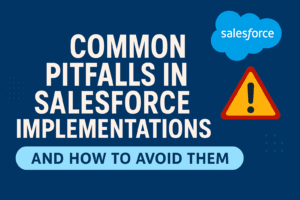BLOG
The Beginner’s Guide to Closed-Loop Reporting
What is closed-loop reporting anyway?
A utility of revenue performance management, closed-loop reporting attributes campaign costs with revenue generated from a sale. Helping marketers track back their performance and advertising activity to understand their best and worst lead sources, as well as what engagement resulted in converting a lead to a customer
The big idea
As the name suggests, the big idea behind closed-loop reporting is to close the loop – that is, utilising insights gained from campaign results to set goals, make predictions and improve the effectiveness of future campaigns.
Closed-loop reporting also supports the alignment between Sales and Marketing, promoting the teamwork that is needed to better understand how leads move through to sales, why pushback happens, and which areas need to be reassessed in order to generate more revenue.
Furthermore, implementing this style of reporting can mean visibility into conversion assists, which can be classified as influential engagements impacting the buyer’s decision.
Getting started
To get started with closed-loop reporting, you need to have the right software in place. This might mean you need to implement marketing automation software, and integrate it with your CRM, ensuring that all the relevant fields are being passed across between each platform.
Also remember to add tracking code to your URL parameters in marketing activities as this will help you pool and track traffic later.
Step 1: Identifying goals
The success of your goals need to be measurable or order to optimise campaigns using the results.
The three core metrics are:
- Cost per lead,
- Influenced revenue, and
- Cost per opportunity.
These three metrics are recommended because they are strong indicators of how a specific campaign has influenced revenue generation. By taking note of the differences between how campaigns were built, you can use these metrics to highlight and understand what works.
Step 2: Gauging campaign responses
Campaign responses include email click-throughs, emails opens, form submissions and landing page visits. These are active responses that indicate a high level interest from contacts.
Campaign responses are particularly telling when it comes to understanding the interests of your prospects, and how they engage with your campaign content. This is how you can test and improve the way you approach content creation and campaign builds. From there, it’s a simple process of aligning strong campaign responses with costs and being able to judge where you need more budget needs to be allocated.

Step 3: Attributing campaign costs
There are several different ways to approach campaign attribution. Here are a few to get you started:
- First touch: Focused on the top of the funnel and awareness stage of the buying process, a first touch approach attributes revenue to the first campaign interaction between marketing and the prospect.
- Last touch: This model assumes that the final interaction that a prospect has with your organisation is responsible for their conversion. As such, this revenue is 100% attributed to this campaign.
- Multi-touch/Linear: This approach takes into consideration all of the campaigns that are involved in acquiring a customer and attributes an equal amount of credit to each. That is, if a contact is a member of your welcome campaign, a nurture stream, event campaign and re-engagement campaign, each of the campaigns that were responded to receives an equal split of the revenue.
For a more in-depth look at attribution modelling, check out our article ‘The Beginner’s Guide to Attribution Modelling.’
Step 4: Tracking campaign costs
When adding campaign costs, it is imperative to be consistent across every campaign that is being tracked, as well as including both actual and budgeted costs. For instance, if you are including media spend for one campaign’s costs, you need to include media spend in all of your campaigns’ costs.
Step 5: Calculating campaign costs
Similarly, when calculating the return on investment for each of your campaigns, the same formula and measuring criteria needs to be used across each.
This is the formula that we recommend:
Return on investment = (Closed revenue attributed to campaigns – Total campaign cost)/Total campaign cost
Step 6: Reviewing the results
Closed-loop reporting will give you insights on campaign costs, campaign revenue, opportunities, and how each of these tie together. So key metrics such as cost per response and cost per opportunity as well as highlighting which campaigns are driving the most revenue will provide a great indication of which areas need attention and which could benefit from more investment. From there, we just start the loop all over again, each time making significantly better improvements.
When it comes to closed-loop reporting, every little thing you’re keeping track of can make the whole process messy. To combat any disorganisation, the key is to keep consistent. From what is being measured and tracked to how the results are being brought together and calculated. This will ensure that when you can finally close the loop, all the of findings are conducive to progress.











